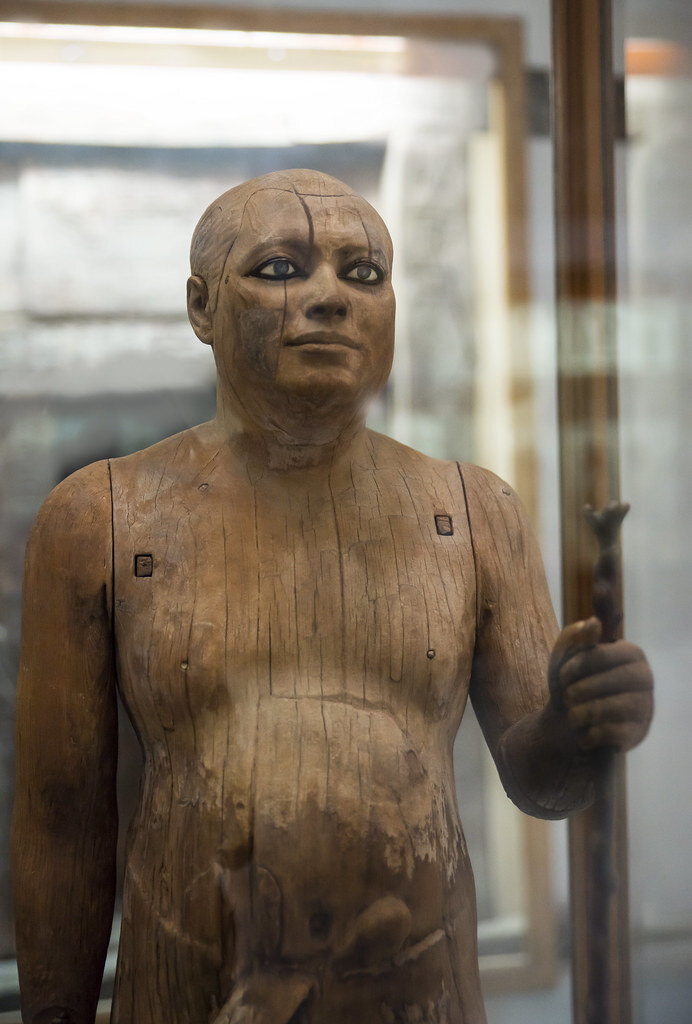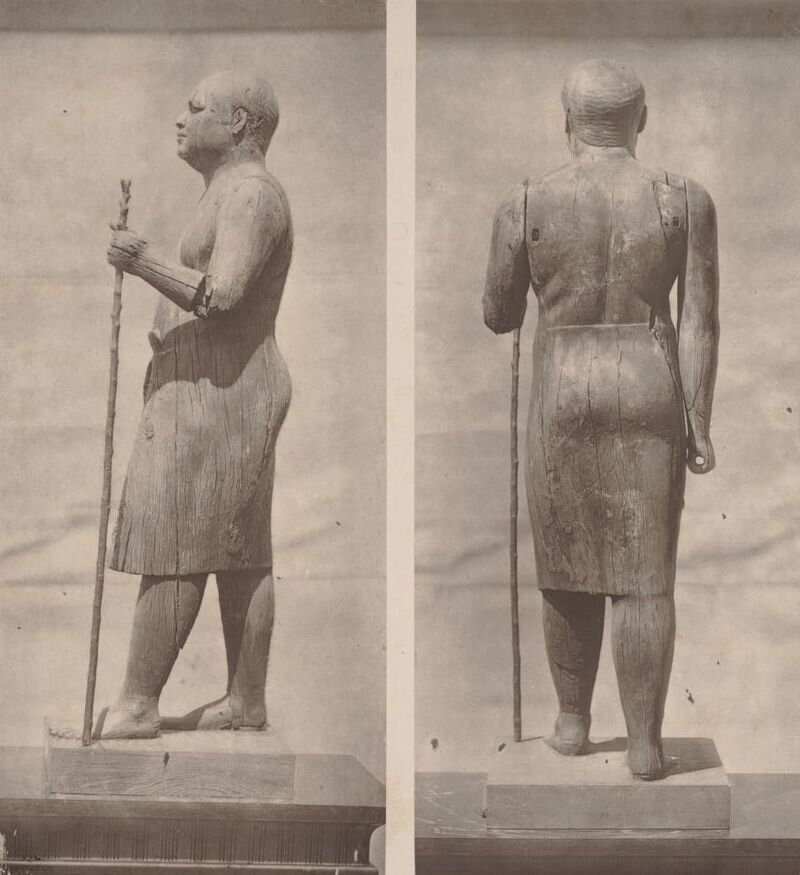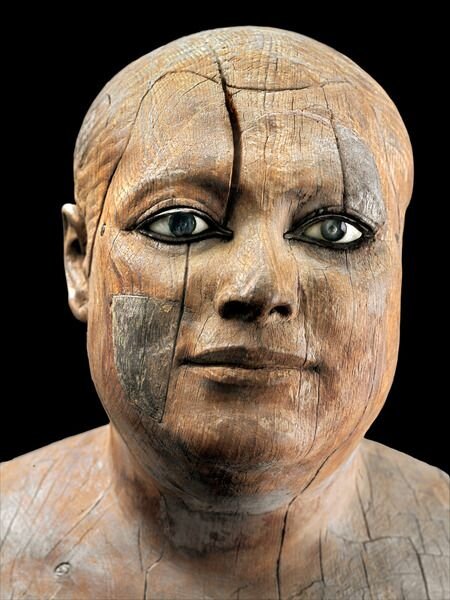A Masterpiece of Old Kingdom Art: Ka’aper the Scribe’s Realistic Wooden Ka Statue from 4,500 Years Ago
The Old Kingdom of Pharaonic Egypt (2700 BCE – 2200 BCE) was an era marked by remarkable art and architectural achievements. Among the notable funerary customs during this period was the creation of life-like Ka statues of the deceased. These statues were believed to serve as containers for the soul, providing a resting place for the deceased in the afterlife. One such masterpiece is the Ka statue of Ka’aper, a scribe from the 4th or 5th Dynasty, who lived approximately 4,500 years ago. This article explores the captivating features and historical significance of this ancient artwork.
Ka’aper was a significant official or administrator during the Old Kingdom period. Though not much is known about his life, the fact that he had a life-sized Ka statue made for him indicates his high status and importance in society. He passed away and was buried sometime around 2,500 BCE, leaving behind an enduring legacy through his intricately crafted statue.
The most striking aspect of Ka’aper’s Ka statue is its stunning realism and naturalism. Unlike many statues from ancient civilizations that often portrayed idealized and youthful figures, Ka’aper’s statue presents a more authentic representation. The sculpture captures the physical features of Ka’aper, including a belly and a slightly jowly appearance. The artist has depicted him in a relaxed yet dignified pose, suggesting that he may have posed for the statue during his lifetime. The attention to detail and the lifelike presentation make this artwork a remarkable achievement of Old Kingdom art.
In ancient Egyptian religious cosmology, the Ka was an essential concept referring to the soul or spirit of an individual. The Ka statue, as a life-sized replica of the deceased, was believed to provide a vessel for the Ka to reside after death. Egyptians believed in an afterlife called Duat, and these statues were meant to accompany the soul in its journey to the afterworld. The practice of creating Ka statues was common among wealthy and influential families, who commissioned their own tombs well before their demise.
The Ka’aper statue was discovered in the mastaba tomb of the scribe in the Saqqara Necropolis, near Giza. Saqqara is renowned for its historic significance, as it is the site of Pharaoh Djoser’s step pyramid, built around 2650 BCE. The statue was originally made of wood and was coated with plaster and paint to enhance its resemblance to Ka’aper during his prime.
The captivating eyes of the Ka’aper sculpture were skillfully crafted using crystals, calcite, and black stone. Egyptian artists were known for their mastery in representing the human form and its intricate details, and the Ka’aper statue exemplifies the finest of their ancient artistry.
The Ka’aper Ka statue is now housed in the Egyptian Museum in Cairo, where it stands as a testament to the ingenuity and artistry of the ancient Egyptians. The careful preservation of this masterpiece ensures that its beauty and historical significance continue to be appreciated by visitors from around the world.
The Ka’aper Ka statue stands as a remarkable testament to the artistic achievements of the Old Kingdom period in Egypt. Its stunning realism and captivating representation of a high-status individual from ancient times make it an invaluable cultural and historical artifact. As a symbol of the ancient Egyptians’ beliefs in the afterlife and their skilled craftsmanship, this wooden statue continues to inspire awe and wonder among art enthusiasts and historians alike.
Hits: 15






